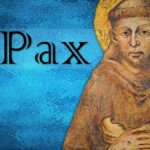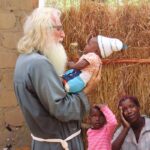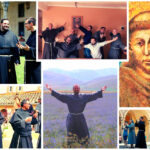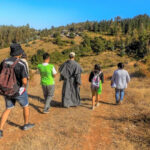5. A New Style of Presence in the World
In the mindset of the Middle Ages, the friars’ way of being present in the world was something new. The friars did not live a settled lifestyle; on the contrary, they traveled the world proclaiming the kingdom of God and calling people to do penance. At first they only preached the Gospel in Italy. However, in time, they crossed its borders. Their style of preaching aroused the admiration of Pope Honorius III, among others. The pope compared the Friars Minor to the apostles who sowed the seed of the Word of God in the homes they encountered. Jacques de Vitry also showed the friars in a positive light. In his Historia Occidentalis he came close to identifying the Friars Minor with the apostles. He saw them as men who traveled each day, visiting villages and cities, working among the people and winning at least some of them to Christ. He saw the friars as men who sought out solitary places in order to devote their nights to contemplative prayer.
This novelty proposed by the friars, the idea of making the whole world their friary, faced plenty of opposition. Nevertheless, it also found acceptance among some of those who followed the lifestyle of stability. A Benedictine wrote in A Life of Saint Francis by an Anonymous Monk of a German Monastery: “The solitary life teaches to turn one’s attention to God and to one’s self. But who desires to edify others must necessarily be present to those he ought to benefit.” Therefore, Francis of Assisi did not flee the world. Together with his brothers, he wanted to “go out into the world,” not so much to withdraw from it as to carry out his activity among others in the world. This activity was primarily service within the Church, service that was permanent, not occasional, that was carried out in the midst of the people, without necessarily creating specific enclaves or founding abbeys. These institutions, despite being places of prayer and work, as well as centers of spirituality, did not go out to meet the people. The people were concentrating in the ever-growing cities; they needed to hear the Good News proclaimed by someone who saw them as brothers and sisters.
This new style of presence in the world, which St. Francis proposed, concerned preaching and mission performed first by the witness of one’s life spent among the people. Only later would words be used. This became a distinctive characteristic of our Order. The lifestyles of other mendicant orders from that time also differed from the monks’ way of life. In fact, proclaiming the call to penance was done in the midst of the people. The life of each friar and the lives of the entire community became a kind of litmus test that confirmed the authenticity of that proclamation. In the next article, we will learn more about the nature of that preaching.
Friar Dariusz MAZUREK, General Delegate for Missionary Animation
Based upon:
ESSER K., La orden franciscana. Orígenes e ideales, Oñate (Guipúzcoa) 1976.
ESSER K., Temas espirituales, Oñate (Guipúzcoa) 1980.
URIBE F., “Ir por el mundo” o la evangelización a través del testimonio, SelFr 77 (1997) 242-262.
URIBE ESCOBAR F., La vida religiosa según San Francisco de Asís, Oñate (Guipúzcoa) 1982.
For more information about missions, go to Facebook at:
https://www.facebook.com/AnimazioneFrancescana/
See also the Instagram account of the Mission Secretariat at:
https://www.instagram.com/sgam_ofmconv/














